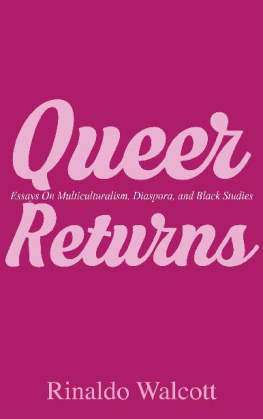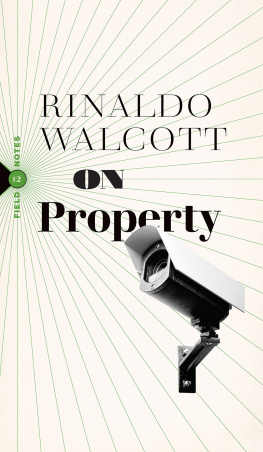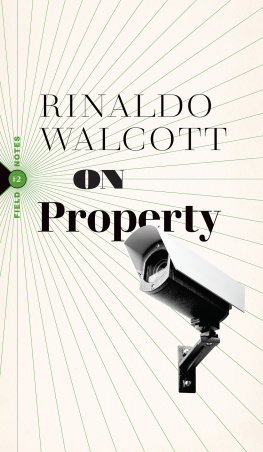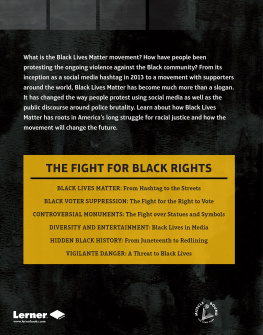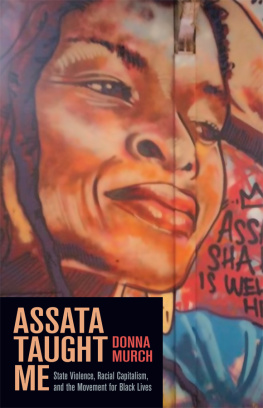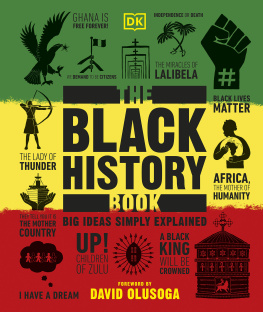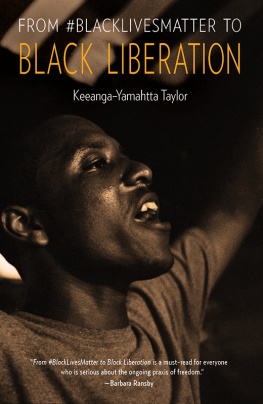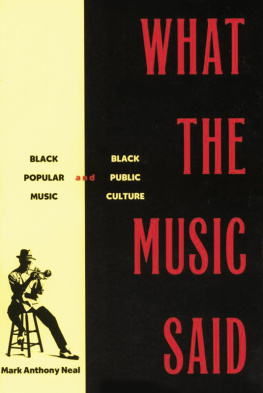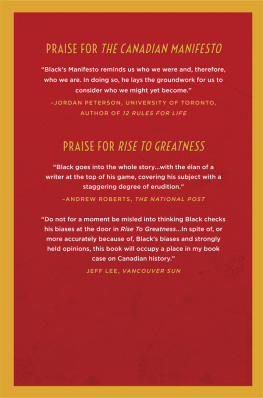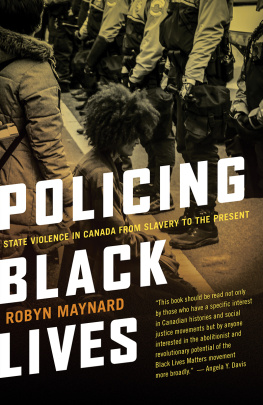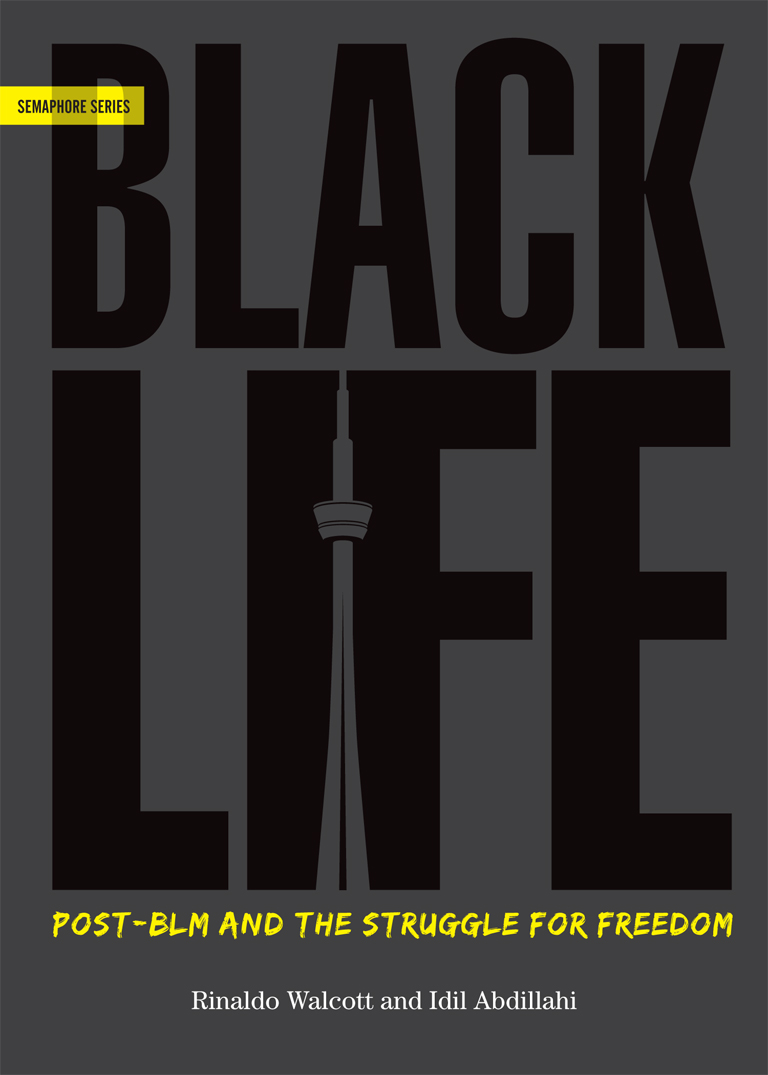Table of Contents
Guide
BlackLife:
Post-BLM and
the Struggle for Freedom

Copyright 2019 Idil Abdillahi & Rinaldo Walcott
ARP Books (Arbeiter Ring Publishing)
205-70 Arthur Street
Winnipeg, Manitoba
Treaty 1 Territory and Historic Mtis Nation Homeland
Canada R3B 1G7
arpbooks.org
Cover design and layout by Mike Carroll.
Printed and bound in Canada by Friesens on paper made from 100% recycled post-consumer waste.
COPYRIGHT NOTICE
This book is fully protected under the copyright laws of Canada and all other countries of the Copyright Union and is subject to royalty.

ARP Books acknowledges the generous support of the Manitoba Arts Council and the Canada Council for the Arts for our publishing program. We acknowledge the financial support of the Government of Canada through the Canada Book Fund and the Province of Manitoba through the Book Publishing Tax Credit and the Book Publisher Marketing Assistance Program of Manitoba Culture, Heritage, and Tourism.
LIBRARY AND ARCHIVES CANADA CATALOGUING IN PUBLICATION
Library and Archives Canada Cataloguing in Publication
Title: BlackLife : post-BLM and the struggle for freedom / Rinaldo Walcott & Idil Abdillahi.
Names: Walcott, Rinaldo, 1965- author. | Abdillahi, Idil, author.
Description: Includes bibliographical references.
Identifiers: Canadiana (print) 20190094885 | Canadiana (ebook) 20190094923 | ISBN 9781927886212 (softcover) | ISBN 9781927886243 (ebook)
Subjects: LCSH: BlacksCanadaSocial conditions. | LCSH: RacismCanada. | LCSH: CanadaRace relations.
Classification: LCC FC106.B6 W35 2019 | DDC 305.896/071dc23
Contents
for Yusra Khogali
We have made BlackLife one word because we believe that living Black makes BlackLife inextricable from the mark of its flesh, both historically and in our current time. The mark of Black flesh is the foundation from which BlackLife in all of it multiplicities, varieties, potentialities and possibilities proceeds from and is therefore intimately entangled.
We wish to thank our multiple interlocutors who have engaged us on the ideas in these pages in many different venues. Many of these ideas began as blog posts and became conference papers but most significantly, for the most part, these ideas have been mulled over time and again over drinks and food at various venues in Toronto. We thank our friends for enabling, listening, challenging, sharing, responding and supporting.
T he beginning and end points of what happens in these pages are 1992 and 2005. In 1992, Black young people and others rioted on Yonge Street in Toronto. The protest against police violence erupted into anger, expressed largely with the destruction of property. Shortly thereafter, the Stephen Lewis report on race relations in Ontario (1992), was issued, and a series of social programs were initiated to address poverty, employment and other concerns that faced the Black community. In 2005, after a rash of gun violence often largely affecting young Black people, the mainstream media dubbed the period the summer of the gun. In that instance, the state responded with the Toronto Anti-Violence Intervention Strategy (TAVIS). TAVIS was a special division of the Toronto Police Services, created to police what have come to be called priority neighbourhoods in Toronto. Priority neighbourhood is a euphemism for non-white, poor or working class areas where a large percentage of the population are Black people.
Across Canada, in any large urban area where Black people live the same dynamics are at play. This book speaks from the geopolitics of Toronto, but its insights have implications far beyond Toronto. The reality is that BlackLife in Canada finds itself being expressed and circumscribed by the demand from Black people that it be a full life and resisted by a set of forces, structures and people that it be something less than a full life. BlackLife then seeks to speak to the complicated dynamics of Black self-assertion and anti-Black racism in Canada.
In retrospect, we now know it was the end, even if it felt like the beginning back then. The 1990s in Canada were Black. The 1990s marked the full emergence of Black cultural politics in Canada in a manner that had not previously existed. In film, music, literature, visual arts and theatre, Black Canada asserted itself, indelible evidence of its presence in the nation. The 1990s marked a significant and important period of Black Canadian artistic production and activism that many assumed would produce a changed political and cultural landscape. Black Canadian contributions would proliferate across multiple spheres, institutions and cultural genres, changing the Canadian landscape indelibly and maybe even enshrining an authentic representation of our avowed multicultural present. Alas, such desires never came to fruition, and the Canadian landscape that might authentically come close to representing our multicultural demographics remains elusive still.
Nineteen ninety-five was quite the year. Mike Harris and the Ontario Progressive Conservative partys forming the new provincial government signalled the beginning of the end of Black possibilities in a number of ways. Belatedly, we might now understand the moment as one when the full effects of neoliberal economic and cultural reorganizing announced itself in what was then understood as Canadas most important province, Ontario, and definitely its most important city, Toronto. The effects of this period on public policy are still being experienced and reckoned with today. By 1999, at the end of the Harris era, all of the ingredients necessary for Black peoples deepening marginalization, displacement and permanent exclusion had been cemented into place.
Taken from the vantage point of cultural expression, the effects of the period remain with us still. For example, Andrea Fatona (2011) in Where Outreach Meets Outrage: Racial Equity at The Canada Council for the Arts (19891999), an important dissertation that has marked the period 1989 to 1999 as one not only of artists activism that changed the cultural landscape, but also, simultaneously saw the waning of the promise for Black artists production. In her research she demonstrates how Black cultural producers activism, in coalition with other non-white artists and activists, produced a racial equity landscape for arts and culture that began to wane in the Harris years in Ontario, and nationally in the Paul Martin years, when he served as finance minister in Jean Chretiens Liberal government. These are the years of Canadian structural adjustment, then referred to as deficit reduction. The former term is usually reserved for global south economies. The impact of deficit reduction on cultural production in this country interrupted a more fulsome racial equitable representative output, one that was significantly hampered by the economic and social policies of that very brutal governmental period.
Instead, we want to think here both temporally and nostalgically about the cultural context of Black Canadas arrival, but as well about the lost opportunities that have never been fully achieved by us. Back then, we danced to Maestro Fresh Wes letting our backbone slide; heard Liberty Silver croon in jazz and supper clubs; the Dream Warriors exploded in Europe with their cool, inflected, jazzy hip hop; Devon called on us to keep up the pressure in his song and video, Mr. Metro, about anti-Black police violence; Acid Jazz Wednesdays at Cameron House were lit; the late Austin Clarke returned to the literary scene; Dionne Brand emerged as one of our most important poets; Djanet Sears owned the theatre stages; dub poetry and its practitioners howled Black resistancethis was the Black 1990s and it seemed, then, like it would continue in perpetuity.
Next page

